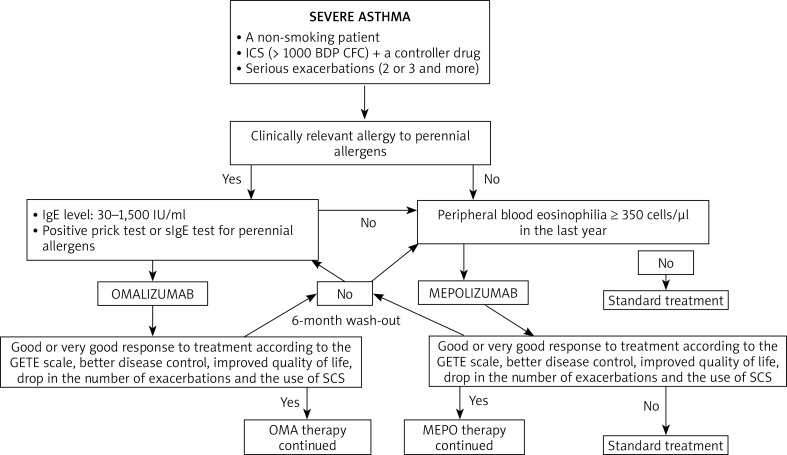Extreme bronchial asthma requires not less than excessive doses of inhaled corticosteroids (ICS) together with a long-acting β-agonist (LABA) or systemic corticosteroids (SCS) for greater than 50% of days/12 months to keep away from lack of management, or stays uncontrolled regardless of the remedy described above.
The analysis of extreme bronchial asthma needs to be confirmed in a reference centre because it requires cautious differential analysis and the exclusion of things hindering the achievement of optimum management.
Extreme bronchial asthma represents a major burden for the affected person, their household and the healthcare system. That is as a result of severity of the signs, drug prices, important impairment of on a regular basis functioning and life high quality, and limitation within the skilled work.
Within the case of ineffectiveness of the step Four GINA remedy, the affected person needs to be referred to a specialist centre to contemplate extra remedy, together with anti-IgE receptor (omalizumab), anti-IL-5 receptor (mepolizumab), or an antibody directed towards the α-subunit of receptor for IL-5 (benralizumab). Within the case of extreme bronchial asthma, intensification of remedy ought to start with embrace organic remedy and never using SCS.
Organic medication can be found in Poland as part of the therapeutic programme for the remedy of extreme bronchial asthma. In apply, the therapeutic programme could change with subsequent notices of the Ministry of Well being and doesn’t must be in keeping with the Abstract of Product Traits for particular person preparations.
The present assessment presents the fundamental ideas of differential analysis of extreme bronchial asthma and the choice of the optimum organic remedy in Polish situations.

Scientific options, perpetrator medication, and allergology workup in 41 instances of fastened drug eruption.
Mounted drug eruption (FDE) represents a drug-related cutaneous response. Many medication been related to this medical entity, with frequently evolving documentation of implicated brokers and medical shows.
Bullous kind can happen though it’s uncommon.To evaluate the epidemiological and medical traits of FDE.We retrospectively analysed all FDE instances who offered to the Scientific Pharmacology Division on the College Hospital, Monastir, Tunisia, for allergy workup.
The imply age of the 41 confirmed FDE instances was 43.8 ± 15.5 years. The time between first lesion onset and FDE analysis was lower than 1 month for 13 sufferers (31.7%). Fifteen sufferers had bullous lesions.
The higher limbs have been the most typical location (65.9% of instances). The patch checks have been constructive in 27 instances; a provocation check yielded a constructive response within the 4 instances examined.
Nonsteroidal anti-inflammatory medication (NSAIDs) have been concerned in 51.2%, antibiotics in 24.4%, and different analgesics in 19.5%.
The most typical offending drug was mefenamic acid in 24.4% of instances. Bullous lesions have been considerably related to paracetamol consumption (P = .014; odds ratio 16.7; 95% confidence interval: 1.76-158).NSAIDs and antibiotics have been essentially the most implicated in inducing FDE; paracetamol was related to bullous lesions.
